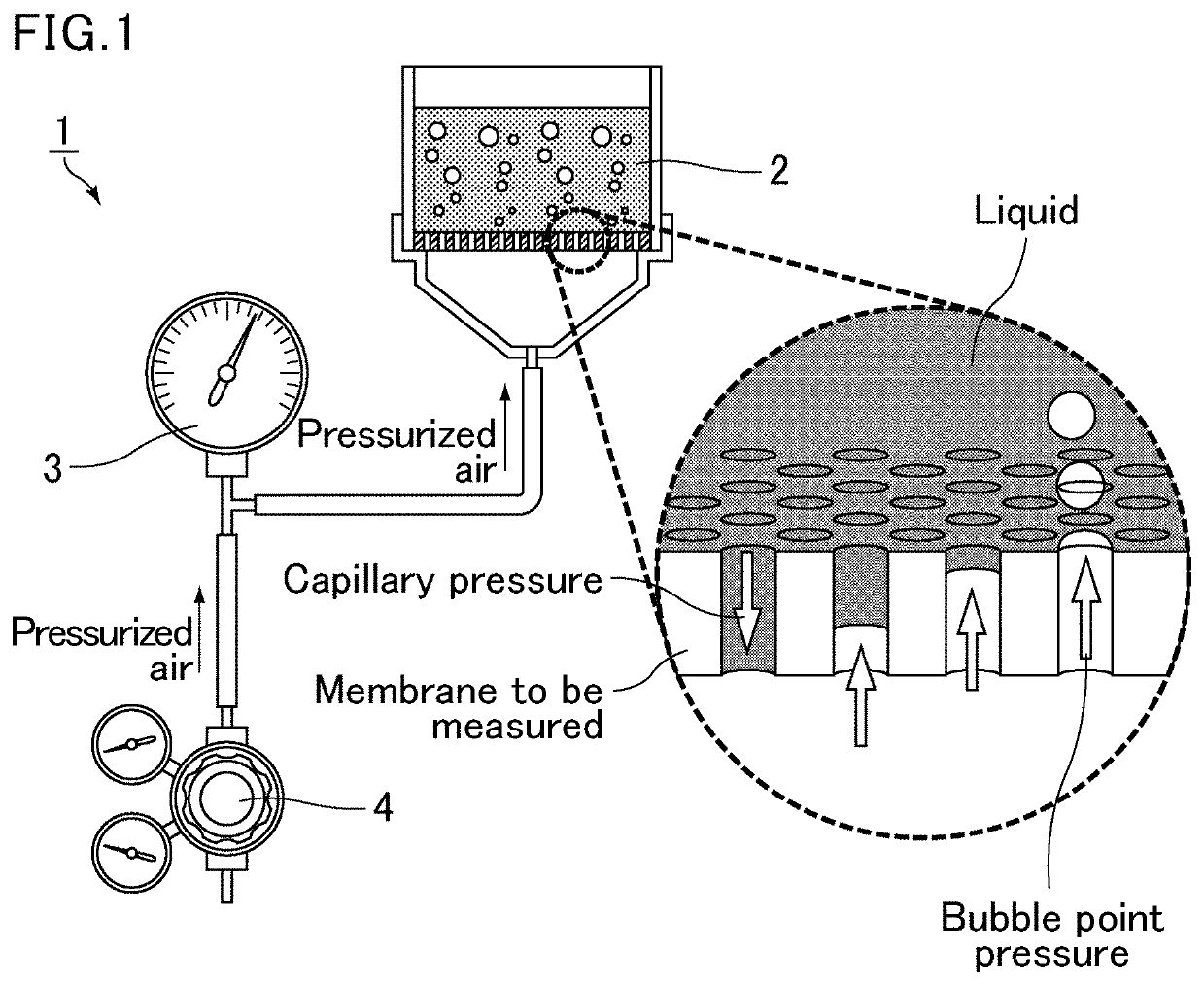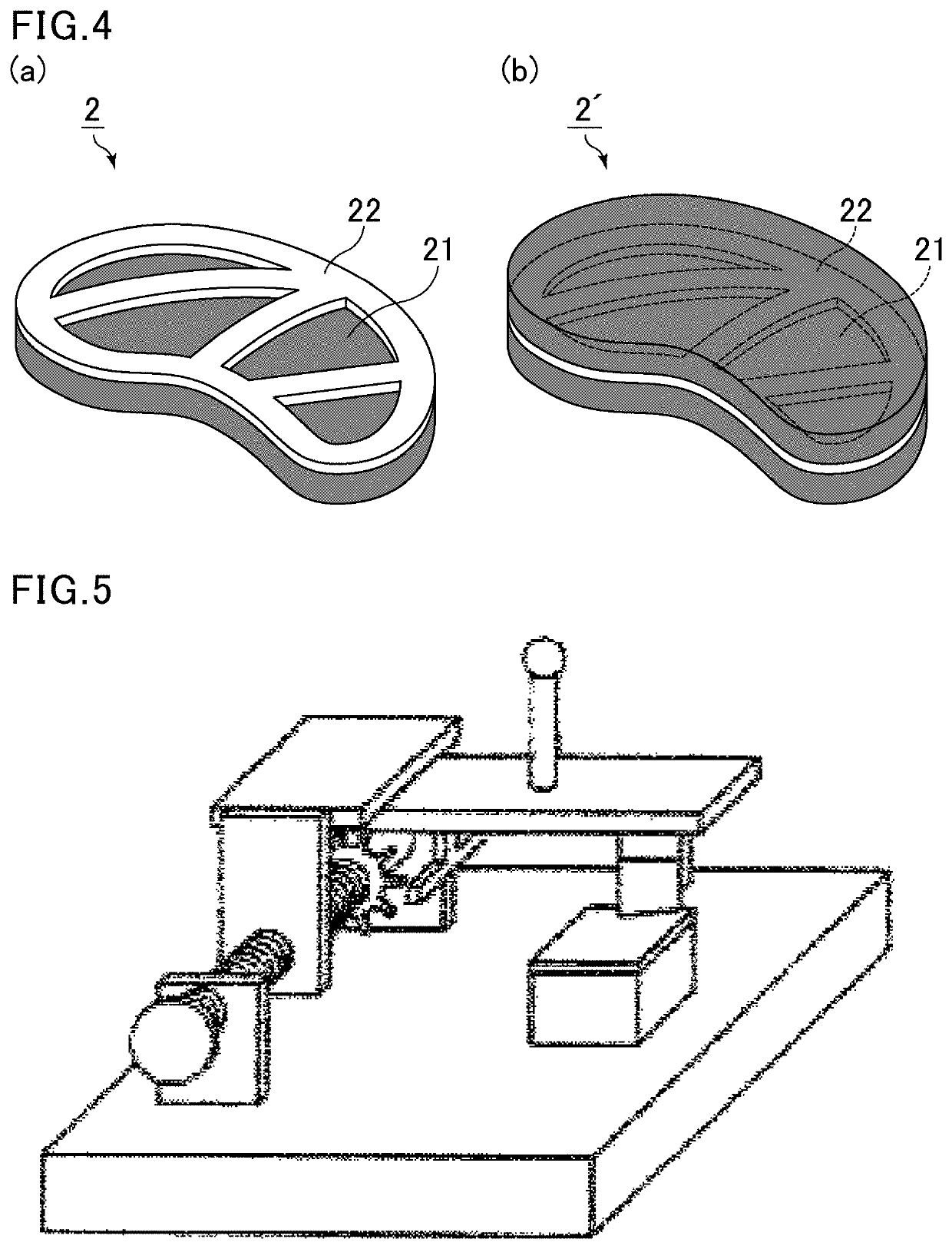Cartilage tissue producing method and cartilage tissue
a cartilage tissue and production method technology, applied in the direction of skeletal/connective tissue cells, artificial cell constructs, prostheses, etc., can solve the problem of difficult to produce such large and thick cartilage tissues
- Summary
- Abstract
- Description
- Claims
- Application Information
AI Technical Summary
Benefits of technology
Problems solved by technology
Method used
Image
Examples
example 1
(1) Preparation of Nonwoven Fabric
[0082]A downy nonwoven fabric having an average fiber diameter of approximately 16 μm and a thickness of approximately 0.5 mm was obtained by the following method: Polyglycolide having a weight average molecular weight of 250,000 was used as a bioabsorbable material and spun into filaments, and then made into a nonwoven fabric by needle punching.
[0083]The obtained layer into which cells penetrate was allowed to absorb a wetting liquid of a fluorine solvent (product name: Profil™), and then set in Prometer 3G, the product of BEL Japan, Inc., in such a manner that the layer as a test piece was in a circular shape with a diameter of 25 mm. Air pressure was applied from the underside of the layer into which cells penetrate and the minimum pressure (bubble point) at which generation of air bubbles was observed on the membrane surface was measured. Based on the bubble point thus obtained, a graph showing the pore size distribution of the nonwoven fabric w...
example 2
[0089]Seeding of the cartilage tissue pieces onto nonwoven fabrics, transplantation, and evaluation of cartilage tissue regeneration were performed in the same manner as in Example 1, except that the conditions for collagenase treatment performed on cartilage tissue pieces were set to (1) 15 minutes, (2) 30 minutes, (3) 45 minutes, and (4) 60 minutes.
[0090]FIG. 7 shows a safranin-staining image (a) and a Verhoeff's staining image (b) of cross-sections of the nonwoven fabrics onto which respective collagenase-treated cartilage tissue pieces have been seeded, taken 10 weeks after transplantation.
example 3
(1) Preparation of Nonwoven Fabric
[0093]A downy nonwoven fabric having an average fiber diameter of approximately 16 μm and a thickness of approximately 0.5 mm was obtained by the following method: Polyglycolide having a weight average molecular weight of 250,000 was used as a bioabsorbable material and spun into filaments, and then made into a nonwoven fabric by needle punching.
[0094]The obtained layer into which cells penetrate was allowed to absorb a wetting liquid of a fluorine solvent (product name: Profil™), and then set in Porometer 3G, the product of BEL Japan, Inc., in such a manner that the layer as a test piece was in a circular shape with a diameter of 25 mm. Air pressure was applied from the underside of the layer into which cells penetrate and the minimum pressure (bubble point) at which generation of air bubbles was observed on the membrane surface was measured. Based on the bubble point thus obtained, a graph showing the pore size distribution of the nonwoven fabric ...
PUM
| Property | Measurement | Unit |
|---|---|---|
| pore size | aaaaa | aaaaa |
| length | aaaaa | aaaaa |
| length | aaaaa | aaaaa |
Abstract
Description
Claims
Application Information
 Login to View More
Login to View More - R&D
- Intellectual Property
- Life Sciences
- Materials
- Tech Scout
- Unparalleled Data Quality
- Higher Quality Content
- 60% Fewer Hallucinations
Browse by: Latest US Patents, China's latest patents, Technical Efficacy Thesaurus, Application Domain, Technology Topic, Popular Technical Reports.
© 2025 PatSnap. All rights reserved.Legal|Privacy policy|Modern Slavery Act Transparency Statement|Sitemap|About US| Contact US: help@patsnap.com



